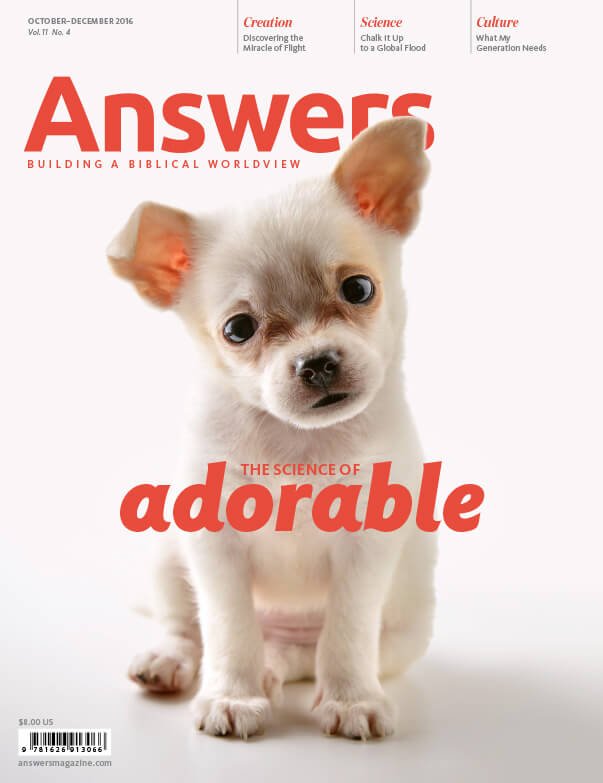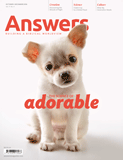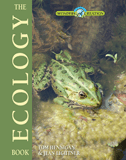The Science of Adorable
Your irresistible urge to snatch up that cute little puppy and hug it for all you’re worth isn’t just a feeling. It’s science.
How did you respond the last time you saw an adorable bunny, a rambunctious kitty, a big-eyed bear cub, or a delightful puppy? Your warm feelings are no accident. Scientists are discovering that everyone (or nearly everyone) has them.
Disney cartoonists have capitalized on cute traits to create memorable characters like Bambi, Dumbo, and Pluto. They work across cultures and continents, too.
Meanwhile, the pet industry is booming. Other organizations are dedicated entirely to rescuing abused animals. Commercials tug at our heart-strings and provoke outrage simply by showing a needy animal.
No wonder conservation organizations pick the cutest animals as their flagship. Just show us an adorable endangered species like a giant panda, and we’ll support the cause.
Have you ever wondered why we find certain animals so adorable? Interestingly, this question has spurred much curiosity in both the creation and evolution communities. The evolutionist wonders what survival benefits “adorable” imparts to an organism. A creationist wonders if the Creator intentionally included cute in His plan for creation.
Cuteness in the Eye of the Evolutionary Beholder
Konrad Lorenz, an Austrian zoologist and a founding father of the science of animal behavior, is credited with initially investigating this cute question. He studied various animals and identified the traits that are considered cute. To be cute means the adorable creature has a large head compared to its body, round cheeks, a round body, large eyes below the center of its head, a protruding forehead, and a soft body surface. He called these traits kindchenschema, translated “baby schema”—or, in lay terms, cute as a button.
Human responses to cute are unlike animal responses . . . but why?
Studies as recent as 2016 indicate that when human adults see adorable traits in human babies, they express positive emotions that include love, tenderness, protectiveness, improved social relations, pleasure, decreased aggression, and increased empathy and compassion.
Do animals, like monkeys, show this behavior? Studies are inconclusive, but lean toward a negative answer.
Human response to cute is unlike animal responses because we feel an attraction and desire to protect beyond our own kind and include animals. The cute traits we see in our own babies are also characteristics of many animal babies. Studies show that when people observe cute animals, activity increases in the thinking and decision-making part of the brain. When shown pictures of animals needing care at birth versus animals that don’t need care, people think animals needing care are cuter. Similar to human babies, cute animal babies invoke deep emotions of love, care, empathy, protection, and pleasure in human adults.
Interestingly, interacting with animals causes a person to produce a hormone called oxytocin, which results in a happy response and an increased level of trust. This hormone also better prepares the body for healing and new cell growth.
In a 2012 research paper published in the Public Library of Science (PLOS), researchers reported three studies that tested how cute images affected people’s job performance. The results suggest that adorable images produce positive emotions, which lead to increased mental focus and more careful behavior. In other words, viewing cute images may trigger caring and careful behavior, not only towards animals but also for driving and office work.
Evolutionists propose two ideas to explain our attraction to both human and animal babies. The first says we are attracted because baby animals look like baby humans and we have been evolutionarily hardwired to be attracted to baby humans. Protection of our own is crucial for our persistence and survival. The other thought is that our empathy toward animal babies allows us to bond better with them, and this bonding gives us some kind of evolutionary advantage, though the reason for this advantage is unclear.
But is there more to adorable than meets the evolutionary eye?

The Brainʼs Response to Cute
Studies have shown that neurons in the front part of the brain (the medial orbitofrontal cortex, associated with pleasurable rewards) become very active when we view infant faces. We don't respond as strongly to similarly attractive adult faces.
Cuteness and the Attributes of the Creator
When you compare humans with many animals, especially mammals, they really share a lot in common. Evolutionists argue that this high degree of similarity suggests they all came from a single, universal common ancestor. Creationists interpret similarity as evidence of a single common Designer. But why did God create similarity between humans and animals at all? Why not make humans completely different from the animal kingdom, especially mammals like monkeys and black bears?
In Genesis 1:28 God blessed His image bearers and told
them to “be fruitful and multiply; fill the earth and subdue
it; have dominion over the fish of the sea, over the birds of
the air, and over every living thing that moves on the earth.
”
Is it possible that God created similarity in order to facilitate
our dominion mandate (God’s command that we rule
His creation)?
We are more apt to manage creation and its creatures wisely if their traits draw our attention and stimulate our care and protection.
Think about your closest friends for a moment. Don’t we tend to develop deeper relationships with people who have many things in common with us? Wouldn’t our call to stewardship be easier if we ruled creatures that had many things in common with us? Surely we are more apt to manage creation and its creatures wisely if their traits draw our attention and stimulate our care and protection.
The above suggests that God designed differing degrees of similarity and cuteness to facilitate our relationships with organisms under our care. This similarity has spurred humanity to increase our general knowledge of the world, and it has motivated medical researchers to understand the detailed biology of animals that have greater similarities with humans, such as mice and pigs, to improve the health and well-being of both people and animals.
Being relational is consistent with God’s own attributes. God is infinitely relational and loving because loving relationships characterize the Persons of the Father, Son, and Holy Spirit. Furthermore, Romans 1:20 suggests that God designed the world and His creatures as a physical illustration of His invisible attributes. Since the capacity for personal relationship is one of those attributes, we should see it manifest in varying degrees throughout creation and not just in humans.
Let us go deeper with this idea. When early theologians were trying to work out the meaning of one God who is called Father, Son, and Holy Spirit, they noticed that each designation referred to God, but within the one God were differences among the three. The word they chose to differentiate them was person. They concluded the best way to explain the Trinity was that three persons compose one God.
A Google search for the word person will reveal many of the definitions proposed by those theologians. Characteristics of a person include, but are not limited to, being unique, active, intelligent, willful, feeling, thinking, problem-solving, distinguishing, remembering, and relational. God has all of these qualities, and many more, in perfect and wonderful ways.
Everyone would agree that people have these qualities in finite ways, but do animals have any of them? Biological research has shown some animals do exhibit several personal and relational attributes to varying degrees. Indeed, every creature has unique characteristics—even among lowly spiders, which make their webs so distinctly that it is possible to identify individual spiders from their webs! Pet owners can testify to the individuality of each pet; they’re all different, whether dogs, gerbils, birds, or fish.
Could God have also illustrated many of His attributes, to varying degrees, throughout the animal kingdom? Is it possible that humans can have relationships with animals, not only because they manifest similar traits that make them adorable, but also because they have individuality? What does it mean when we say our pets have “personality”? It doesn’t mean they have “personhood” in a legal sense, with rights before the law. But it does allude to the unique combination of traits that makes each one special. Every single creature glorifies God in a way that no other creature can; each has a special purpose in God’s larger plan (Psalm 148:10–13). And we are called to care for His creation, just as He cares, including His care for the sparrows and lilies (Matthew 6:26–30).
Could we even have relationships with animals if they did not have traits that we can relate to? Naturalists like me, who have enjoyed getting to know all sorts of “wild” animals over the years, including black bears, know that each one is a unique individual with varying degrees of intelligence, behavior, emotion, cuteness, and relational qualities.
Just ask any farmer, who knows every cow in his herd by name—even if he has hundreds of cattle. He can tell you every individual’s quirky habits and preferences. The same goes for shepherds; for zookeepers who care for big cats, apes, elephants, flamingos, or snakes; and for field biologists who study birds, ants, or spiders!
If every animal has varying but lesser degrees of some attributes that we can relate to, combined with kindchenschema, this combination could greatly facilitate our dominion mandate.
Anatomy of Cute
Many animals have certain distinct characteristics that are designed to arouse a caring response in our brains.
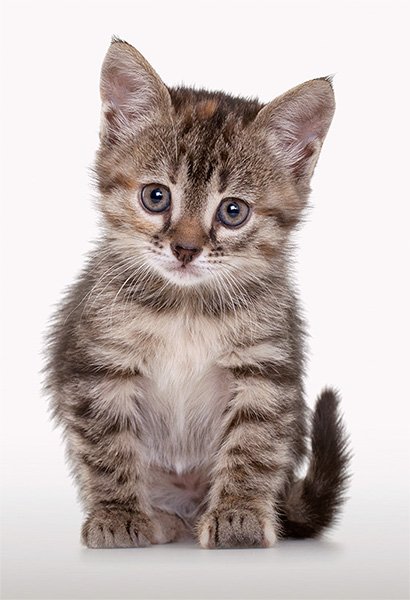
Round Head: The heads of young animals are large compared to their bodies.
Broad Forehead: Young animals are born with large brains, already full of neurons.
Big Eyes: Some young animals are born with well-developed eyes that see very well.
Full Cheeks: Young animals need strong muscles to begin sucking milk right away.
Round Body: Young animals are born with extra reserves of fat.
Button Nose: Young noses are small and undeveloped, with plenty of room to grow.
Soft Surface: The skin of newborn animals is loose so the skin can stretch as they grow.
The Human-Animal Connection: Glory to God
Medical researchers are growing to understand the value and importance of animals in helping people with disabilities and severe emotional and spiritual trauma. More and more, therapists assign service dogs to people who struggle with depression. I’ve seen many examples of the power of these bonds to comfort, aid, and heal. Actually, both parties benefit. For example, I have seen a dog help a soldier avoid a panic attack by giving him hugs and kisses. In return, the soldier takes care of the dog physically and emotionally; dogs are social animals by design and benefit from healthy relationships. This is just one of many examples where trained animals enhance the emotional and physical health of both people and animals. I know about an abused horse named Comet that experienced emotional healing through careful handling by believers in Jesus Christ. This same horse now provides equine therapy for girls who have suffered abuse and addiction, in a Christ-centered environment.
One girl in particular has been especially touched by this horse. The first day they met, the horse did not approach any other girl but made a beeline to her. There seemed to be an immediate understanding between the two and they formed emotional bonds. This horse is a bridge that will eventually help this girl trust people again. At the same time, this formerly abused horse has learned to trust and help hurting people.
The ultimate goal for the girl is a renewed and transformed mind, as the Spirit of God uses all of these mechanisms to bring her into a wholesome relationship with Him. If the horse were not created to possess varying degrees of cuteness and similarity with us, would it be possible for humans to care for, protect, and bring healing to the horse? Alternatively, if these traits were not present in the horse, would it be possible for image bearers to use the horse as a therapeutic bridge toward emotional and spiritual healing for another human being?
Which Face Grabs You?
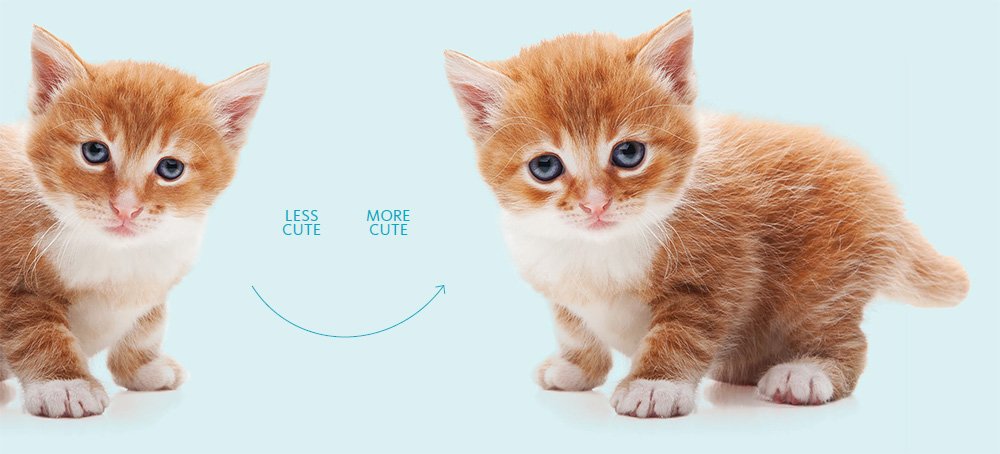
Some young faces look less cute than others. Defects and odd proportions reduce our emotional response.
Cute: More Than a Happy Feeling
As Christians, we know cuteness did not arise to enhance our survival as a human race. Our God is the Creator and Sustainer of His creatures—not random natural processes.
If God made creation to be a physical illustration of His invisible attributes, then part of His higher purpose was to create varying degrees of personality traits in both humans and animals. These traits point to a perfect Being who possesses all of them and much more. By recognizing reflections of His attributes in creation, our gaze is redirected to His perfection, so that we may give Him all glory, honor, and praise.
Research suggests that the Lord had a higher purpose for cuteness, too. He placed it into both animals and humans to stimulate human emotions of love, care, and protectiveness. He also gave animals, especially mammals, many other traits in common with humans. This similarity and cuteness facilitates our relationships with the creation that God wants us to care for, as we exercise our dominion mandate.
Research suggests that God had a higher purpose for cuteness.
This care of animals takes many forms. It drives us to care for our pets and animals on our property. It also motivates many of us with a more wide-reaching goal, to promote conservation efforts around the planet, as we steward the earth’s resources and protect animals on the brink of extinction. Others even make a career of training animals as vehicles of emotional and spiritual healing and companionship for fellow humans.
We should recognize that these activities are just small
reminders of the greatest task of all. The Creator wants us
to experience the grace and forgiveness of Jesus our Lord,
the Son of God and Creator of the world, as we enter into a
relationship with Him. He has a purpose for us to accomplish,
both small and great, “for we are His handiwork, created
in Christ Jesus to do good works, which God prepared
in advance for us to do
” (Ephesians 2:10, NIV).
Anatomy of Cute
Many animals have certain distinct characteristics that are designed to arouse a caring response in our brains.
Round Head:
The heads of young animals are large compared to their bodies.
Broad Forehead:
Young animals are born with large brains, already full of neurons.
Big Eyes:
Some young animals are born with well-developed eyes that see very well.
Full Cheeks:
Young animals need strong muscles to begin sucking milk right away.
Round Body:
Young animals are born with extra reserves of fat.
Button Nose:
Young noses are small and undeveloped, with plenty of room to grow.
Soft Surface:
The skin of newborn animals is loose so the skin can stretch as they grow.
Answers Magazine
October–December 2016
Your irresistible urge to snatch up that cute little puppy and hug it for all youʼre worth isnʼt just a feeling. Itʼs science.
Browse Issue SubscribeRecommended Resources

Answers in Genesis is an apologetics ministry, dedicated to helping Christians defend their faith and proclaim the good news of Jesus Christ.
- Customer Service 800.778.3390
- © 2024 Answers in Genesis



